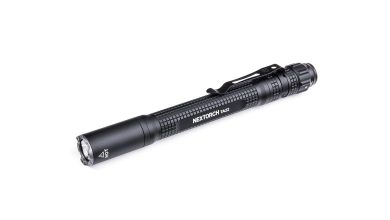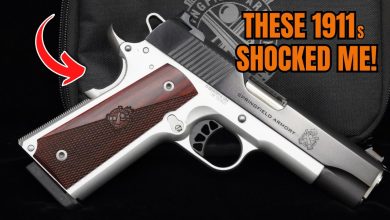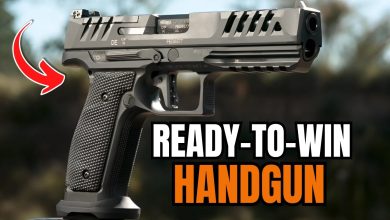Review: Rock River Arms BT-2 Operator ATR
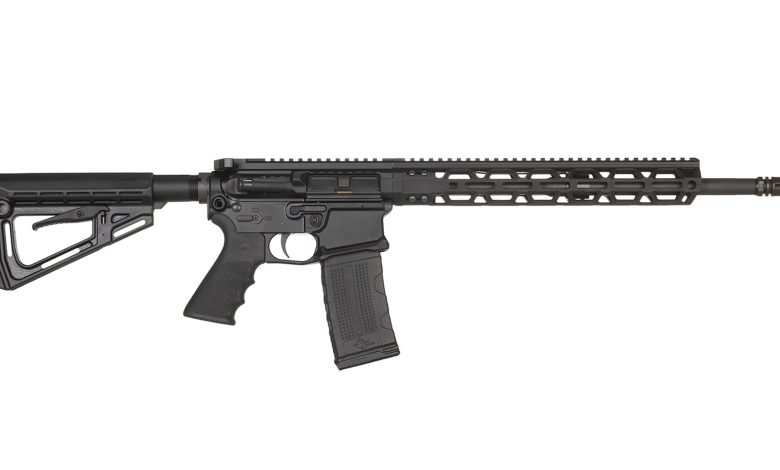
Rock River Arms (RRA) first caught my attention at SHOT Show in 1997, where its M1911 pistols really stood out for high quality—and included an ultra-rare 9 mm long slide. Two years later, the company started making AR-15s, and now that line is among the broadest of any manufacturer, with a bewildering array of models.
One of its latest releases is the BT-2 Operator ATR. ATR stands for Ambidextrous Tactical Rifle, and the BT-2 delivers with a bilateral safety selector, charging handle, magazine release and bolt catch. Though ambidextrous functionality isn’t new, the BT-2’s bilateral bolt catch and mag release are integrated into the lower receiver, not add-on devices attached to a conventional receiver that often are prone to damage.
The BT-2 uses the direct-gas-impingement operating system, is chambered in 5.56 NATO, weighs 6.85 pounds unloaded and is 32.25 to 35.5 inches long, depending on stock setting. Lower and upper receivers are milled from 7075-T6 aluminum billet and are a new design. Besides ambidextrous controls, the lower receiver also has an integral QD socket on each side for mounting a sling and a flared magazine well to enable easier reloading while on the move or in darkness. The upper receiver has a plunger-type forward assist, allowing the operator to perform a chamber check, then reseat the bolt into battery or, by tapping the assist to remedy a minor out-of-battery stoppage.
Plentiful M-Lok slots and QD sling-mount holes grace the 13-inch handguard, which also allows airflow to keep the barrel cool • Hogue’s Beavertail grip is comfortable while fostering excellent purchase, and can be swapped if the user has a different preference • At the muzzle, a standard A2-style, “birdcage” flash suppressor protects the threaded muzzle • Ambi-dextrous controls include a left-side magazine release and a right-side bolt release, making this a welcome rifle for right- or left-handed shooters • Rock River’s NSP-2 stock offers six positions to best fit the user.
The 16-inch, government-profile barrel is made from CMV steel and has a 1:9-inch twist rate, which offers optimal accuracy for bullets weighing between 55 to 62 grains. It has an A2-style birdcage flash suppressor and, like mil-spec M4 barrels, the BT-2’s pipe is chrome lined, which extends bore life even beyond nitriding.
The bolt is made from Carpenter 158 steel and the bolt carrier from 8620 steel. The inside of the gas key and the bolt channel are also chrome lined—a subtle mil-spec feature often overlooked by AR-15 makers that reduces corrosion and friction and makes cleaning easier. Its upgraded two-stage trigger breaks cleanly at 4 pounds, 11 ounces, about three-quarters of a pound lighter than a standard design. The barrel, carrier group and lower internal parts are manganese phosphate finished—another mil-spec feature—while aluminum parts are anodized.
Though RRA is known for creating attractive, unconventionally styled handguards, the 13-inch one on the BT-2 follows the current-design thinking for tactical rifles with a slim profile and full-length Picatinny rail on top. Made from 6061-T6 aluminum, the handguard has M-Lok slots along three sides to mount accessories, a QD mount hole on each side at the front and a tab on the top rail that fits into a corresponding slot on the upper receiver to help prevent the handguard from rotating.
Located on the left side of the receiver, the bolt catch is larger and easier to manipulate than the standard ping-pong paddle. It locks and releases the bolt, while the corresponding lever on the right side releases the bolt, but can’t lock it rearward. The right-side lever is located rearward of the dustcover, requiring a partial release of the firing grip to actuate. Similarly, the magazine-release button on the right side follows the standard design and location, but the left-side lever is positioned too far rearward to allow easy activation.
The BT-2 uses RRA’s NSP-2 telescoping stock that adjusts 3.25 inches across six settings, a rubber buttpad and two QD sockets and three sling-attachment points. Though the castle nut securing the buffer tube isn’t staked, it has staking notchesfor those inclined to do so with a hammer and punch (or using a tool from Tango Uniform that makes the process more certain). The rubber grip is the comfortable Hogue Beavertail.
Dual, extended wings on the Radian Raptor charging handle allow rapid accessibility, while not being too large as to easily snag onto your gear when the rifle is slung against your chest. Component fit and finish on the BT-2 are quite good, and there’s only a minor amount of play between the upper and lower receivers.
I tested the BT-2 Operator ATR at 100 yards shooting off a Caldwell rest using a Leupold Mark 4HD 8.5-25X scope and four different ammunition types with bullets weighing from 55 to 70 grains. There were zero stoppages during the 200-round test. RRA claims its chrome-lined barrels deliver five-shot, 1.5-MOA groups using match-grade ammo, but my sample usually shot better with ADI 55-grain Match and Hornady 62-grain Black. This Hornady load isn’t advertised as match grade, but has proven more accurate than its price suggests in two rifles I recently tested, and is an included load in every 5.56 NATO-caliber rifle I review.
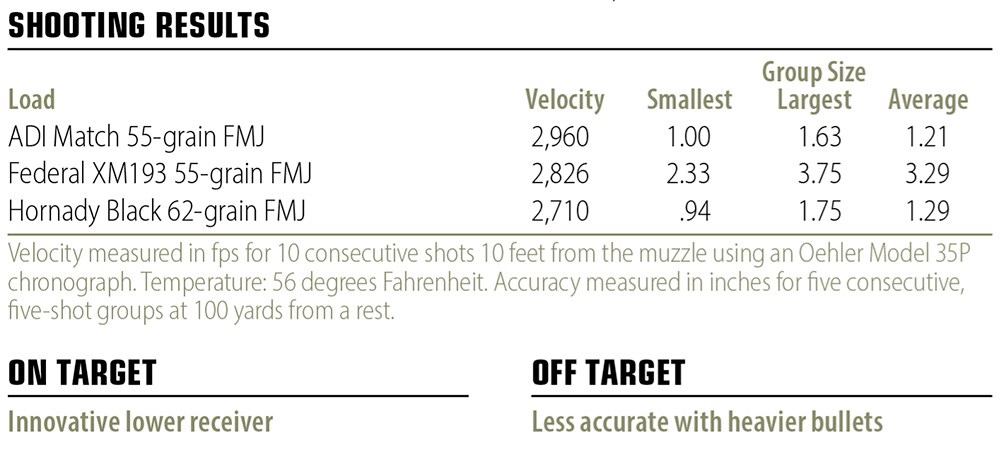
RRA notes that a 1:9-inch twist works best with 55- to 62-grain loads, which my testing bore out with a match-grade, 70-grain load producing larger-than-expected 2.5- to 4.5-inch groups, prompting me to stop after three groups, as there would be no point wasting high-grade ammo.
Priced at $1,690 MSRP, the BT-2 isn’t inexpensive, but it uses several mil-spec components, upgraded parts and higher-grade materials—including receivers and a buffer tube made from 7075-T6 aluminum which is stronger than the 6061 grade often found on less costly ARs. Also, the lower receiver isn’t a standard design and incorporates bilateral controls, integral QD sockets and a flared magazine well, all of which add machining time, as does the intricately made handguard.

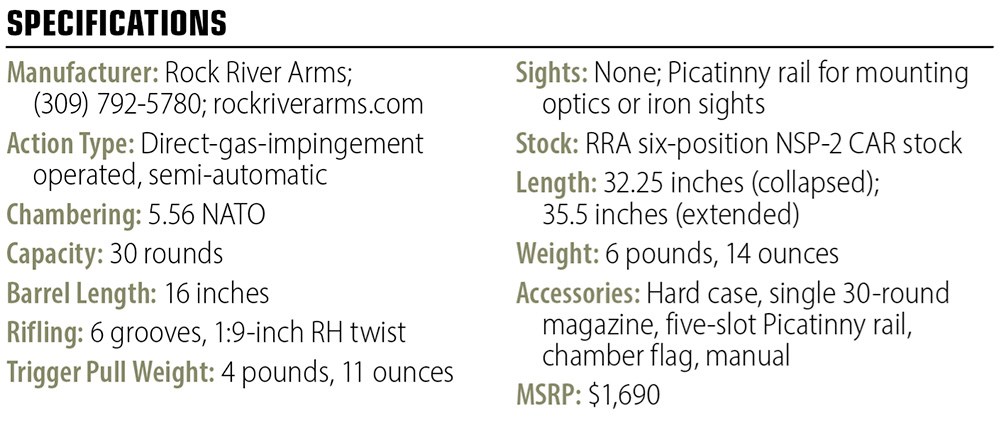
Read the full article here


